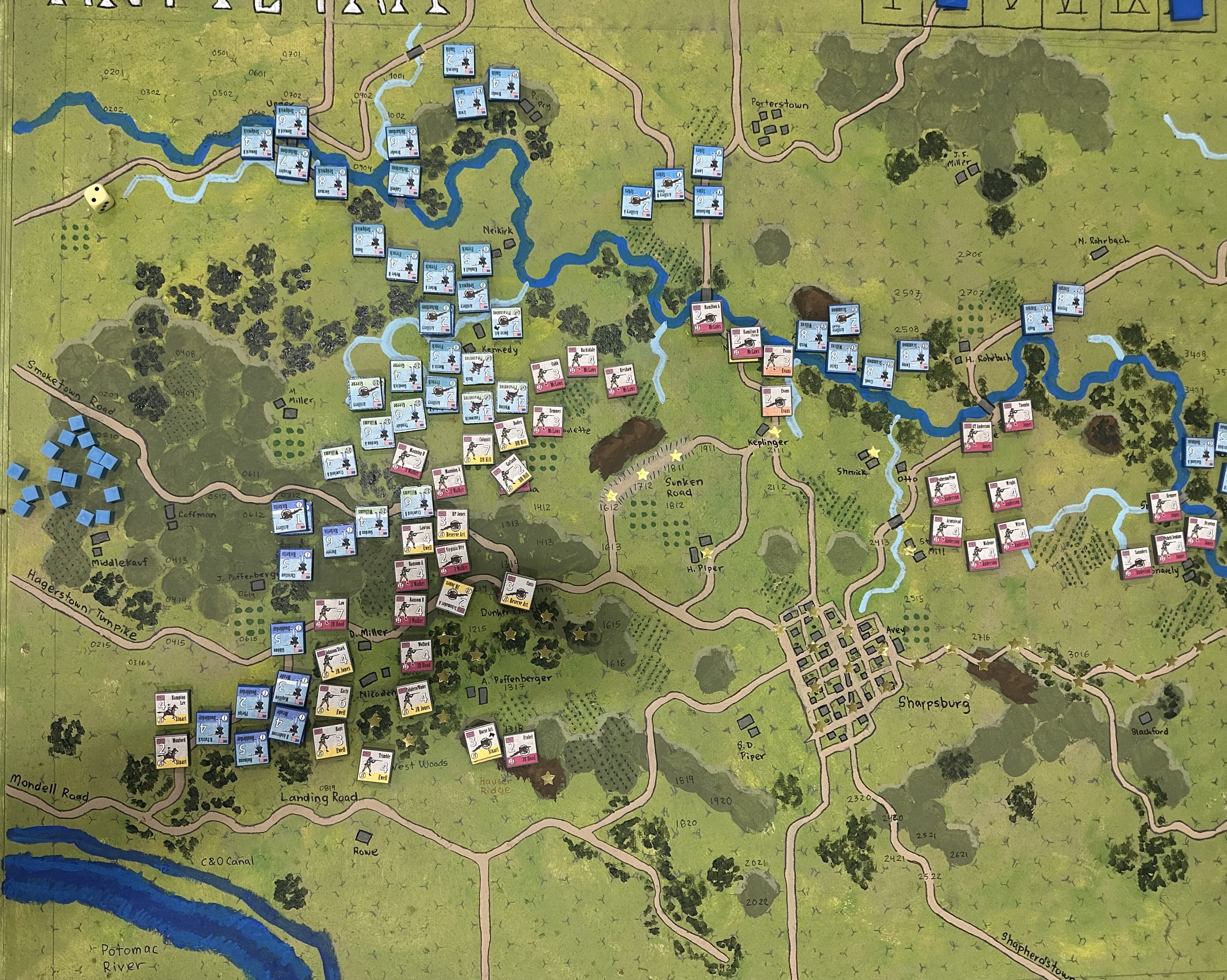I call this a "preview" review because unfortunately I was only able to play this to the top of turn 5 (of 16), so while I got a taste of the game it hadn't become a full blown bloodbath by the time I had to pack up.
The game is a one person project.
https://www.whitedoggames.com/antietam
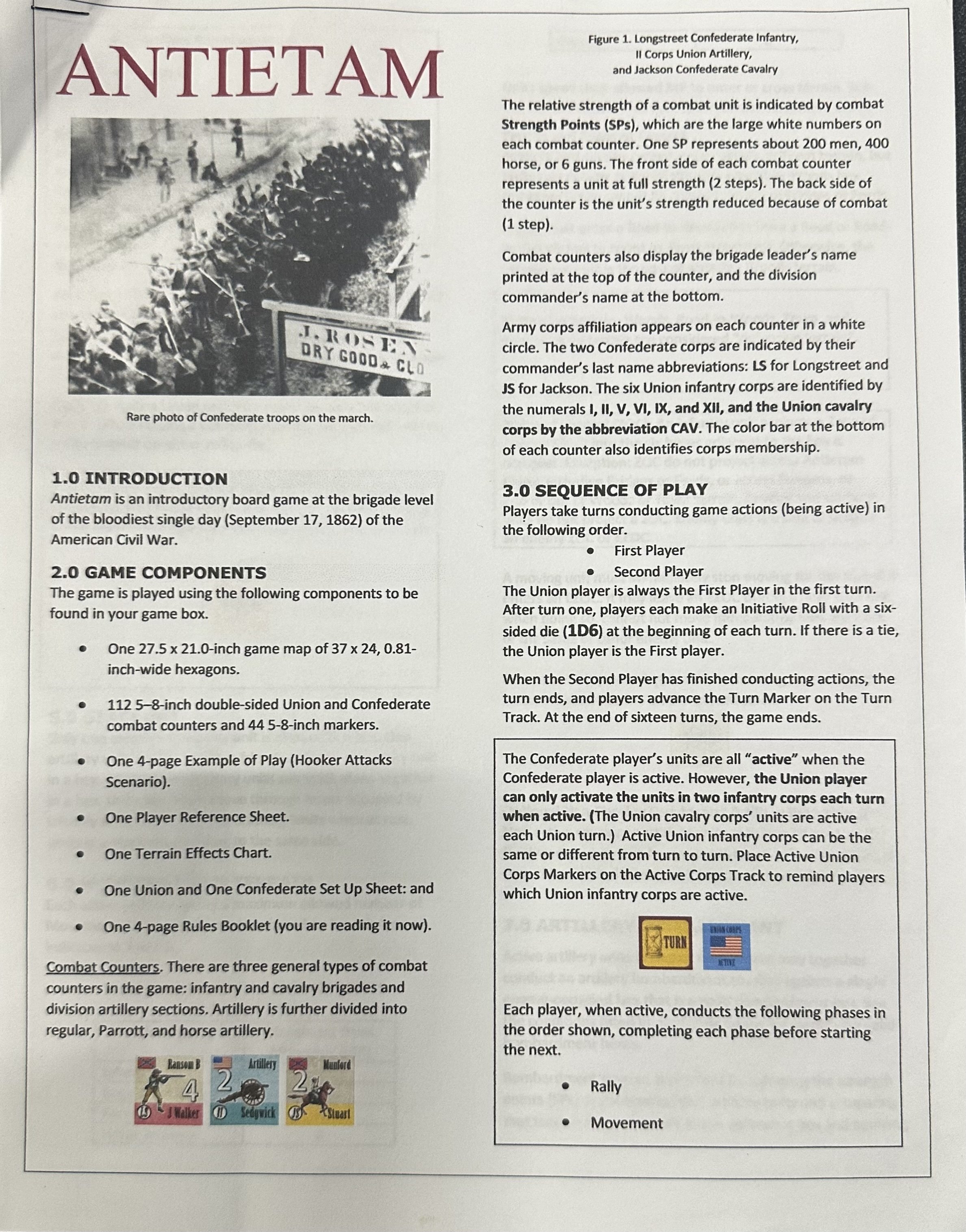
The rules are only four pages long. As a game system, it seems a like a solid foundation exists inside, but some of the ambiguity in how rules are written causes headaches. Some choices in interpretation made by both myself and my opponent might be correct to the intent, or they might just be house rules. We honestly don't know. Once that is sorted however, the combat is fast. It is simple comparison of combat strength ratings. Adjacent units can combine for attacks. Combat is resolved on a comparative table. Units start at full strength, can be reduced to half strength in an engagement, and destroyed in a following engagement. Units can be pulled out of combat and spend a turn recuperating back up to strength. Fairly simple stuff.
Bridges and fords are important, as units can not normally cross rivers. This makes the bridges on the battlefield vital points of importance.
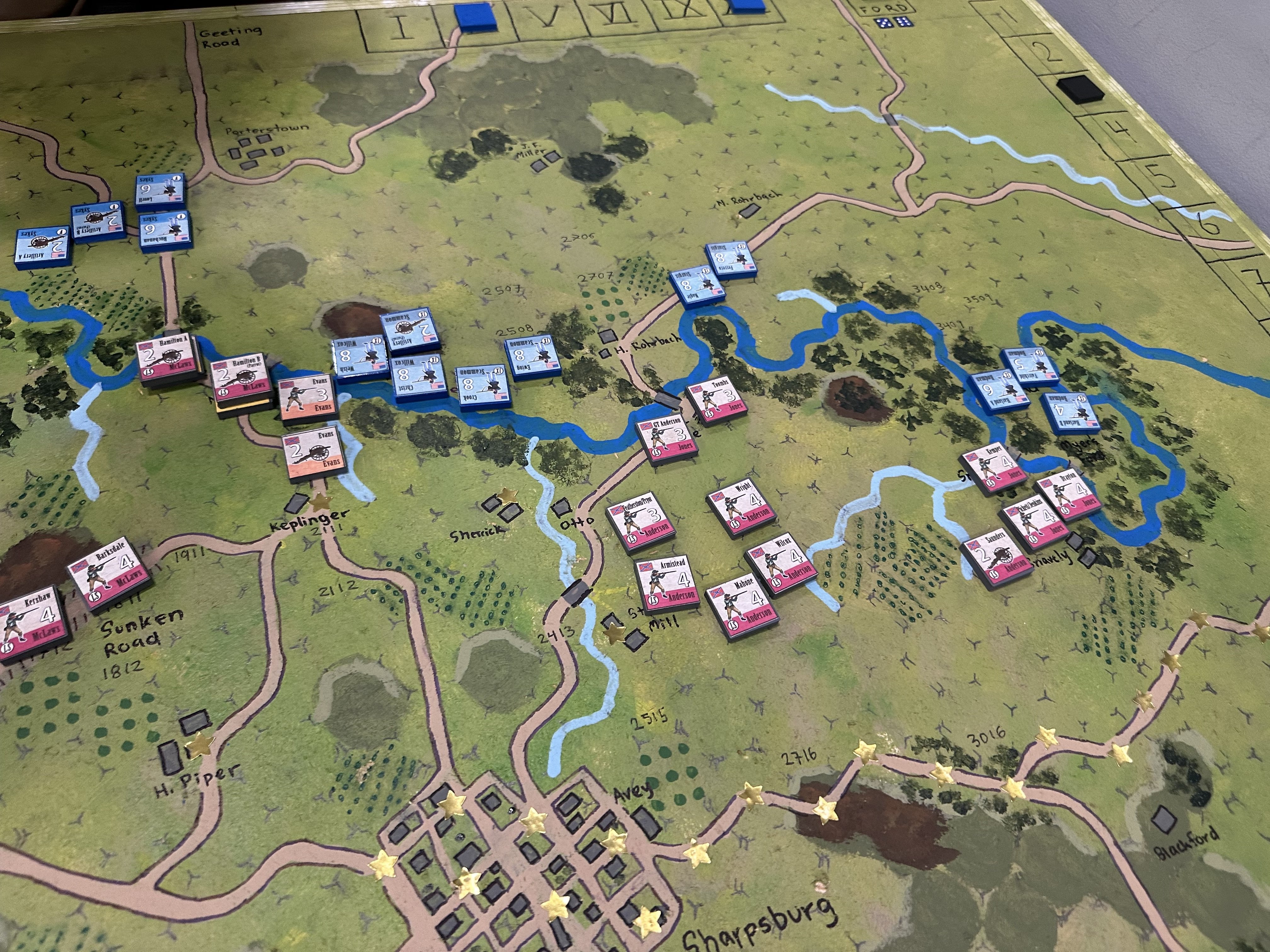
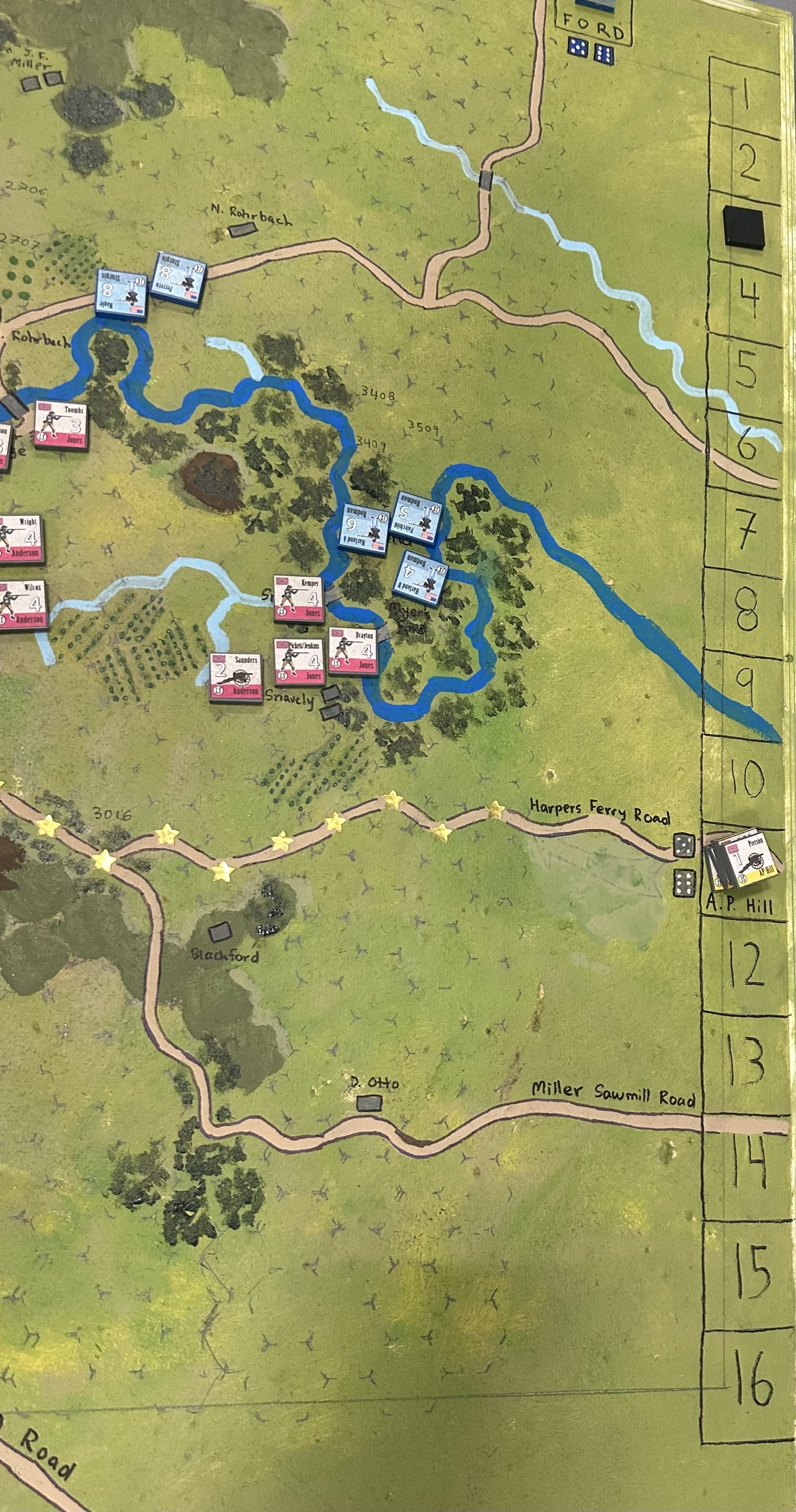
The deployment of the game and the map is incredibly accurate to the actual battle.
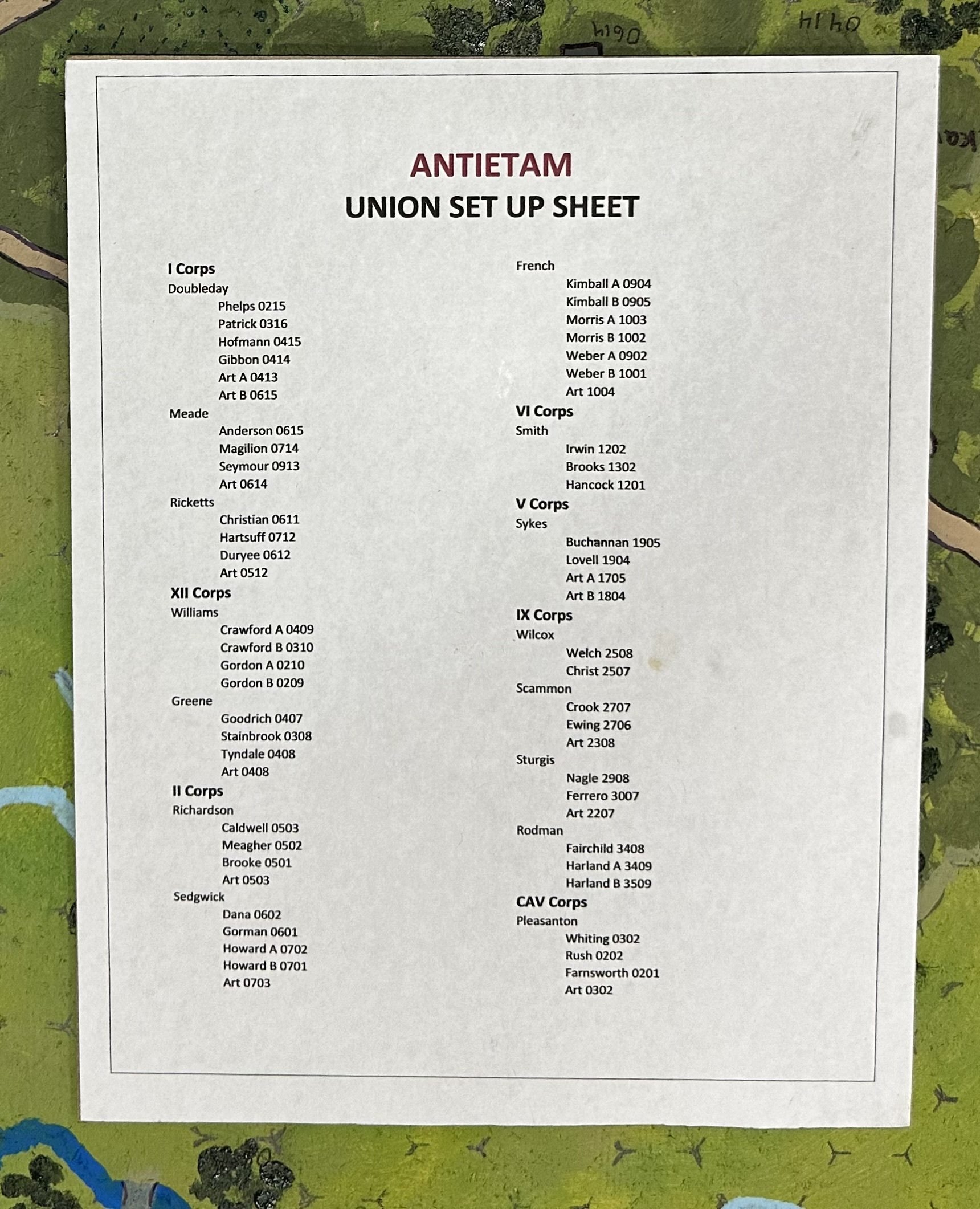
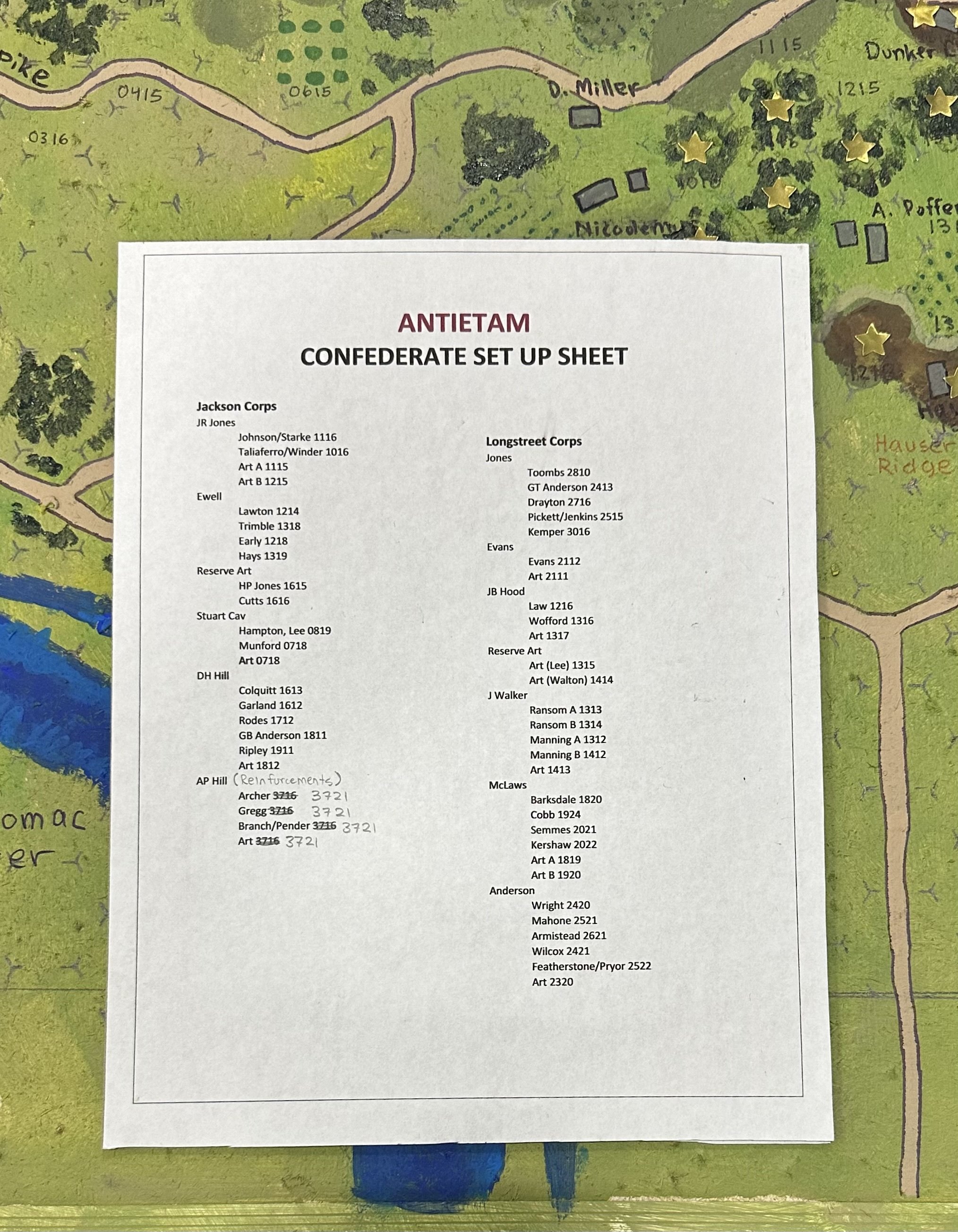
My friend who handmade the large corkboard board (as opposed to playing on a smaller provided paper map) actually took it to Antietam itself and wash able to identify individual locations off the board.
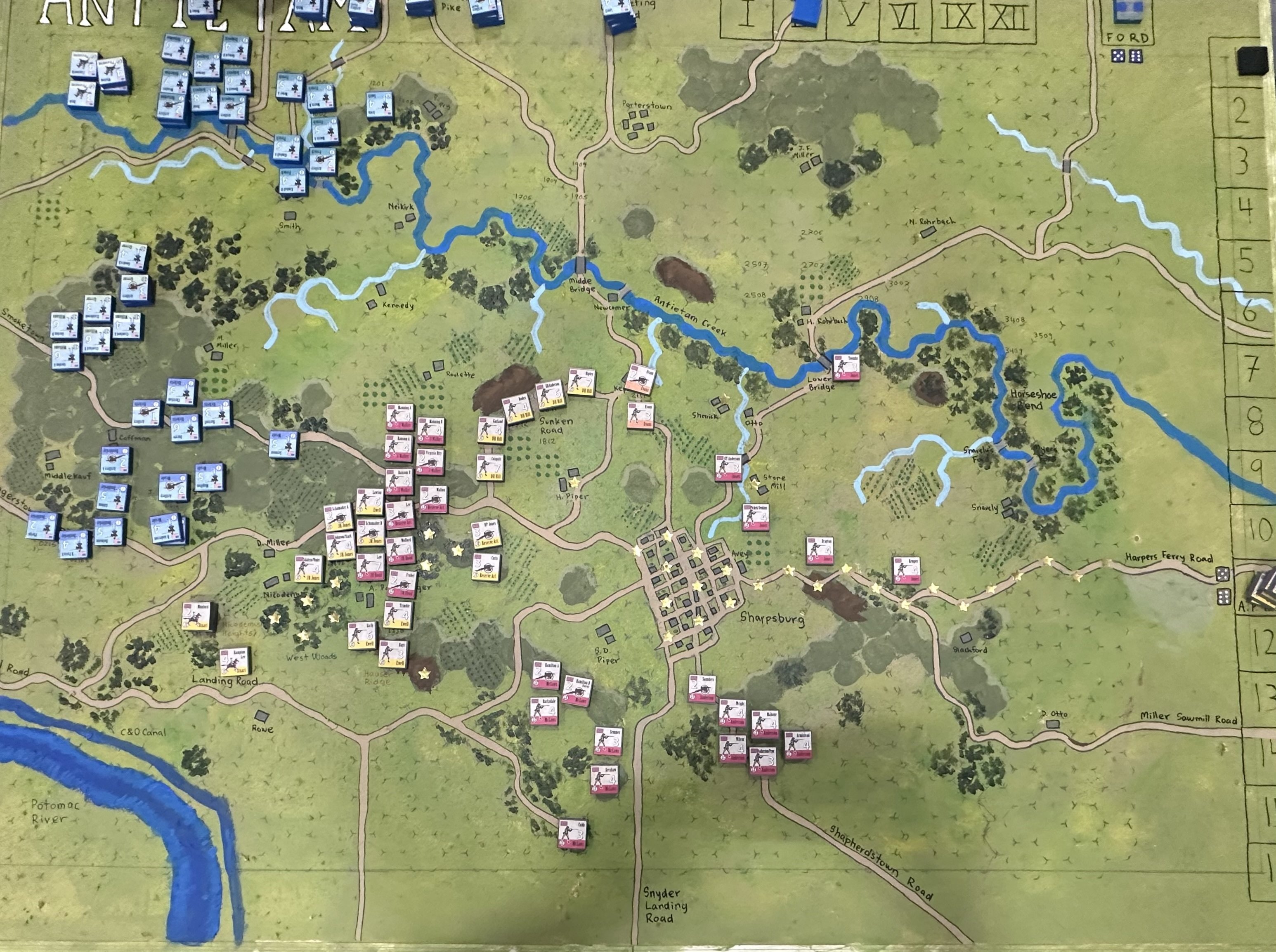
Last night I played as the defending Confederates, my friend as the attacking Union. My goal was to defend all objective locations, marked by gold stars on the map, and his was to take them. Beginning on turn 11 I would have begun rolling for reinforcements to join the fight, putting even more pressure on the Union.
In the battle, Union forces had numerical superiority as well as infantry units generally with higher combat power. This was offset by leadership issues where only any two (chosen by the Union player) of the six corps could be active on any given turn, whereas my numerically inferior Confederates could all take actions.
We traded a few potshots with artillery while I rushed my most southerly forces to plug bridge crossings. The bulk of my forces lined up in preparation to slog out line combat with Union forces. I immediately pulled back from a few of the outlying objectives in order to have a more robust defensive line and hopefully prevent getting turned.
Union forces massed along the obvious point of approach, and just as the first few units in contact began to fight, we unfortunately had to call the end. An unsatisfying end to the story.
Another time, when there is longer time to fully play the battle we do plan to play fully.
